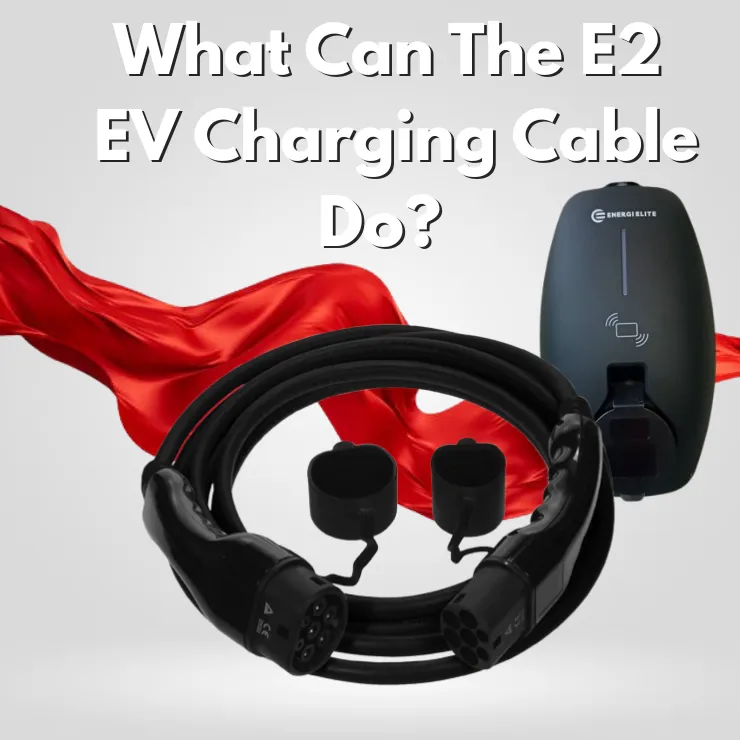What Can The Type 2 EV Charging Cable For E2 Do?

Are all the specifications of the EV charger known? What about the EV charging cable itself? What qualities are often overlooked when an EV charging cable is considered during the purchase of an electric vehicle? In this article, light is shed on some of the key functionalities of the Type 2 EV Charging Cable that is provided with the E2.
Closer Look Into The E2’s Type 2 EV Charging Cable
It’s important to consider that the Type 2 Charging Cable bundled with your EV Charger as it acts as the medium between the EV and your EV Charger. Question whether the charging cable has qualities that befit that of charging an EV outdoors with all things considered. Following that, these are some aspects of the cable that comes with the E2 that will be highlighted:
- IP Rating
- Secure Connection
- Swappable Cable Lengths
Even the Type 2 EV Charging Cable Has An IP Rating

Charging outdoors during rain is often a concern for new EV owners. While attention is usually given to the EV charger’s IP rating, the same consideration should be extended to the charging cable. The E2 Type 2 Charging Cable is rated IP55, meaning it is protected against dust and low-pressure water jets.
Included with the Type 2 Charging Cable are cover caps attached to protect your connectors after finishing with the charging.
Secure Connection Of The Type 2 EV Charging Cable

Warranted concern is often expressed regarding untethered EV charging cables, as it may appear that they could become unplugged during charging. However, the Type 2 Charging Cable provided with the E2 is latched securely into the socket once fully inserted. Even if the cable were to be accidentally disconnected, the disconnection would be detected by the E2, and the charging process would be stopped immediately.
Not Enough Length? Just Swap the Cables!

A standard 5-meter cable is included with the E2. However, thanks to the modular design adopted by the E2, the Type 2 EV Charging Cable can be swapped for lengths of up to 10 meters. This allows greater flexibility to be provided, enabling charging to be carried out regardless of how the EV is parked or where the charger is mounted.




